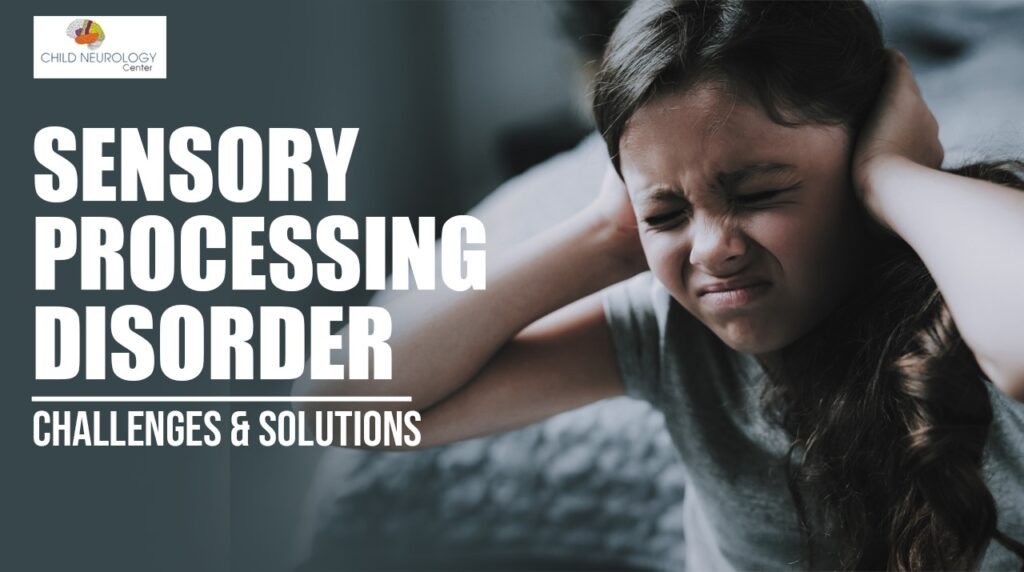
Sensory Processing Disorder, or SPD for short, impacts the way the brain receives and uses various sensory information. Unlike most people who can effortlessly integrate sensory input, children suffering from SPD will struggle with ordinary sight, sound, texture or movement. This disorder is often comorbid with other neurodevelopmental disorders such as autism and ADHD, further complicating diagnosis and management. Despite these hurdles, with the right techniques and professional help, children with SPD can learn to maneuver their surroundings with far more ease.
What is Sensory Processing Disorder (SPD)?
While SPD is not classified as an SPS, it could be described as a form of “Syndrome of Proprioceptive Sensory Integration Dysfunction.” SPD manifests itself when the nervous system fails to appropriately and accurately process and respond to boundless sensory input or stimuli. A child with SPD may overreact or underreact to stimuli resulting in behavior and emotional problems. They may suffer from sensory overload because of loud noises, bright lights, or certain textures. Daily activities may quickly become too overwhelming. On the other hand, some children seem to crave stimulation and will engage in excessive sensory input activities such as spinning, jumping, or touching everything in their surroundings.
How SPD Impacts Daily Life
From social settings to school, children suffering from SPD can face difficulties in most aspects of day to day life, such as:
School: Problems paying attention, managing background noise in the classroom, or unwillingness to wear certain clothing due to their texture.
Social Interactions: Avoiding touch, issues with personal boundaries, or feeling overwhelmed in large groups.
Motor Skills: Issues with balancing, coordination, or performing sighted fine motor movements like handwriting or buttoning a shirt.
Emotional Regulation: Constant outbursts, suffering from anxiety, and having difficulty coping with changes in schedule for routine activities.
These difficulties stress the need for prompt diagnosis and intervention. Consulting with the best pediatric neurologist helps in identifying SPD and assist in devising management techniques.
Types of Sensory Processing Issues
SPD can be noticed in different forms mainly classified into three types:
1. Sensory Modulation Disorder (SMD)
Children with SMD can:
Over respond to stimuli, for example, reacting very strongly to loud sounds and soft touches.
Under respond or be hypo-sensitive, which means that they do not respond appropriately without strong sensory stimuli.
Seek sensory stimuli voraciously, which means that they crave a lot of movement, pressure or particular textures.
2. Sensory Based Motor Disorder (SBMD)
This affects movement and coordination, smooth and spontaneous motor activities. Children may face challenges with balance, motor planning, or smoothly performing physical activities.
3. Sensory Discrimination Disorder (SDD)
Children who suffer from SDD are unable to distinguish one sensory input from another which makes it difficult to identify different textures, sounds and even spatial awareness.
Diagnosis and Treatment
As SPD does not have a single clear-cut definition, diagnosing it is not the easiest of tasks, as its symptoms can often coincide with various other ailments. Having an assessment from the best child neurologist is essential to eliminate other potential underlying neurological issues. This will allow for tailoring an appropriate treatment plan.
Strategies for Managing SPD
Occupational Therapy (OT): An occupational therapist assists children with sensory integration through their skillful engagement in activities to help improve their stimulus processing ability.
Sensory Diet: A specific set of sensory experiences embedded into children’s daily activity to assist with managing their self-regulation.
Environmental Modifications: Changes in classroom lighting, sound levels, or class seating arrangement can be more favorable to sensory seeking students.
Physical Activities: Swimming, swinging, and yoga can enable children to better regulate their senses.
Parental Guidance and Support: Teaching parents about sensory processing disorder and how to practically cope with their child’s difficulties at home.
Why It’s Important to Act Early
The sooner a child is diagnosed and intervened on, the better their chances of coping with SPD. Having the best pediatric neurologist on the team makes sure the child’s needs are insightfully addressed through thoughtful integration of multiple detailed plans for effective sensory and functional activities.
Supporting Children Living With SPD
Children diagnosed with sensory processing disorder (SPD) can flourish when the necessary support and resources are provided. With the help of a best child neurologist, occupational therapists, and dedicated caregivers, children with SPD can learn coping strategies to better their life. Parents as well as educators need to implement strategies to understand SPD and work towards effective solutions. With these steps, children will feel safe, supported, valued, and empowered to achieve their maximum potential.


